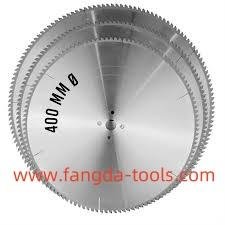The Cementitious Waterproofing Market is experiencing substantial growth as the global construction industry increasingly prioritizes long-term durability and structural integrity. Cementitious waterproofing solutions are becoming vital components in protecting concrete structures from moisture intrusion, corrosion, and chemical exposure, driving significant adoption across residential, commercial, and industrial applications.
Market Overview
Cementitious waterproofing is widely utilized for its ease of application, compatibility with concrete, and strong bonding characteristics. It is primarily used in basements, water tanks, bridges, tunnels, and wastewater treatment facilities, where exposure to moisture is high. The material’s cost-effectiveness and long-lasting protection have made it a preferred solution for waterproofing in diverse climatic conditions.
The market’s growth is propelled by rapid urbanization, infrastructure modernization, and the rising need for water-resistant building materials. Governments worldwide are investing in large-scale construction and restoration projects, creating substantial opportunities for cementitious waterproofing adoption. Moreover, the trend toward sustainable and low-maintenance construction materials is reshaping the industry landscape.
However, the market faces challenges such as limited flexibility compared to alternative waterproofing systems like bituminous or polyurethane coatings. Despite this, advancements in material formulations and the integration of polymer-modified cementitious products are overcoming these restraints, offering improved elasticity and durability.
Request a Sample Report: https://researchintelo.com/request-sample/5315
Key Market Drivers
-
Infrastructure Expansion and Urban Growth:
The ongoing development of residential complexes, commercial centers, and public infrastructure in emerging economies is fueling demand for effective waterproofing systems. -
Rising Focus on Structural Durability:
Increasing awareness of maintenance costs and the impact of moisture-related deterioration is prompting builders to invest in long-lasting waterproofing materials. -
Sustainability and Green Construction:
Cementitious waterproofing aligns with sustainable construction goals by extending the lifespan of concrete structures and reducing material wastage over time. -
Technological Advancements:
Innovation in polymer-modified cementitious coatings has enhanced flexibility, adhesion, and crack-bridging capacity, broadening the scope of applications in modern construction projects.
Market Restraints
While the market outlook remains positive, certain restraints influence its growth trajectory.
-
Lower Flexibility: Traditional cementitious coatings have limited elasticity, restricting their use in high-movement areas.
-
Surface Preparation Requirements: Improper substrate preparation can lead to reduced performance or application failure.
-
Competition from Alternatives: The availability of liquid-applied membranes and polyurethane coatings poses competitive challenges in specific applications.
View Full Report: https://researchintelo.com/report/cementitious-waterproofing-market
Opportunities and Future Outlook
The cementitious waterproofing market presents numerous opportunities driven by global infrastructure development and climate resilience initiatives. Increasing rainfall variability and extreme weather conditions are prompting governments and private sectors to prioritize waterproofing in both new and existing structures.
Additionally, advancements in nanotechnology and chemical additives are improving the performance characteristics of cementitious coatings, enhancing permeability resistance and crack healing capabilities. Manufacturers are also focusing on eco-friendly formulations that comply with green building standards, reinforcing the market’s sustainable appeal.
The renovation and repair sector presents a particularly lucrative opportunity. As aging infrastructure in developed regions requires maintenance, cementitious waterproofing provides a reliable and economical solution for extending service life and preventing deterioration.
Enquire Before Buying: https://researchintelo.com/request-for-customization/5315
Regional Insights
-
Asia-Pacific:
The region dominates global demand, led by extensive construction activities in China, India, and Southeast Asia. Rapid urbanization, industrial expansion, and government investments in public infrastructure projects are key growth catalysts. -
North America:
Growing awareness of sustainable building practices and the modernization of aging infrastructure are driving product adoption. The U.S. is witnessing increased demand for advanced waterproofing systems in commercial and residential projects. -
Europe:
Stringent building regulations emphasizing energy efficiency and moisture control are influencing widespread application of cementitious waterproofing, particularly in northern and central Europe. -
Middle East & Africa:
The focus on water conservation, combined with ongoing infrastructure development and urban projects, is expanding the market across Gulf countries and African nations.
Market Dynamics
The cementitious waterproofing market operates within a dynamic ecosystem characterized by continuous innovation and evolving construction trends. The rise in smart city projects and the adoption of prefabricated building techniques are driving the need for high-performance waterproofing materials that are both efficient and adaptable.
Material science developments are transforming the industry, with hybrid formulations offering enhanced adhesion, resistance to harsh environments, and improved mechanical strength. These technological enhancements are reducing maintenance requirements and ensuring long-term cost efficiency for builders and developers.
Environmental concerns are also shaping market dynamics. Cementitious waterproofing solutions that minimize volatile organic compounds (VOCs) and reduce environmental footprints are gaining traction. The growing preference for sustainable materials is expected to further strengthen this market’s trajectory.
Check Out the Report: https://researchintelo.com/checkout/5315
Market Segmentation
The market can be segmented based on:
-
Product Type: Crystalline waterproofing, polymer-modified cementitious coatings, and rigid cementitious coatings.
-
Application: Roofs, basements, tunnels, water tanks, bridges, and industrial facilities.
-
End-Use Industry: Residential, commercial, and infrastructure construction.
Each segment demonstrates unique growth drivers, shaped by regional construction trends and technological innovations. Polymer-modified formulations are anticipated to witness the fastest growth due to their improved elasticity and moisture resistance.
Future Trends
The future of the cementitious waterproofing market lies in product innovation, performance optimization, and digital integration. Building Information Modeling (BIM) and AI-driven maintenance systems are expected to enhance project efficiency and material performance analysis.
Moreover, self-healing concrete technology is emerging as a revolutionary trend, incorporating cementitious waterproofing principles to improve long-term resilience. Manufacturers are also investing in lightweight, fast-curing formulations that reduce labor time and support rapid infrastructure development.



